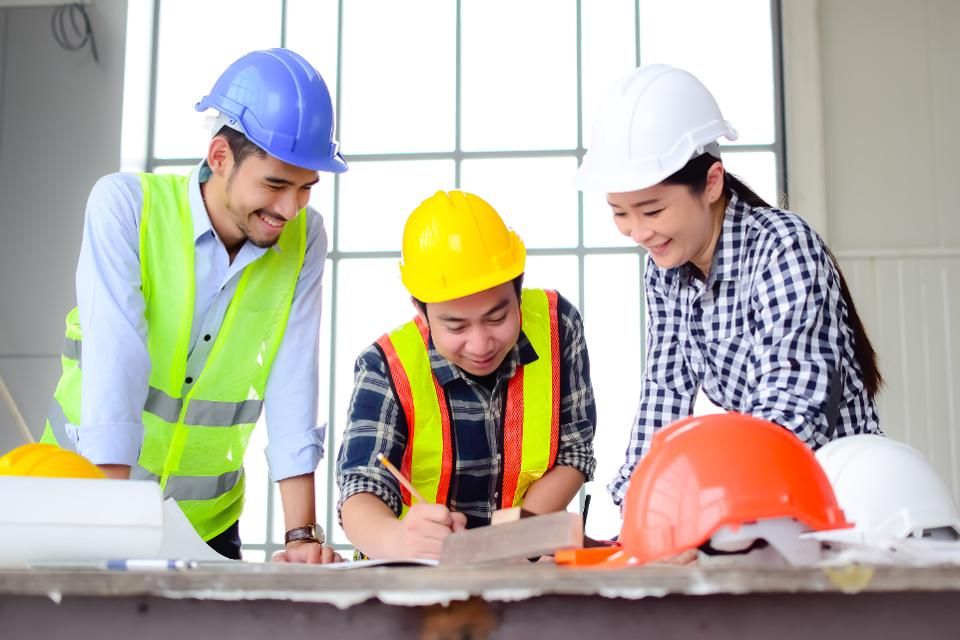Article: Three Emerging Technologies Impacting The Construction Industry
 Technology is shaping the world with everything from electric cars to hyperloop. But when it comes to the real estate construction industry, it is still underserved by technology. The construction industry contributes over 4% to the U.S. GDP, and it needs to adapt to new technologies in order to automate processes and decrease dependencies on manual labor.
Technology is shaping the world with everything from electric cars to hyperloop. But when it comes to the real estate construction industry, it is still underserved by technology. The construction industry contributes over 4% to the U.S. GDP, and it needs to adapt to new technologies in order to automate processes and decrease dependencies on manual labor.
However, the breakthrough technologies to make construction more efficient that have hit the market within the past five years have primed the industry for disruption. Below, read three of these technologies that I have come across and how each will shape the way we approach building in the future.
Robotics
No industry is as labor-intensive as construction. Since construction sites are uncontrolled (open) environments, it is most difficult to incorporate robotics, unlike in closed industrial environments. However, construction activities such as bricklaying are so repetitive and labor-intensive that the use of robotics is helpful to not only reduce costs, but also maintain quality and precision.
Very recently there have been breakthroughs in robotics for construction. One such pioneer product is the semi-automated mason — “SAM” — a bricklaying robot designed and engineered by Construction Robotics. It’s the first bricklaying robot commercially available and doesn’t actually replace a traditional mason. Rather, it works in collaboration with a mason, increasing their productivity up to five-fold.
Zak Podkaminer of Construction Robotics told me, “Construction will benefit from robotics in work that is dangerous, is repetitive, and where heavy lifting is required. [In] high precision work such as complex designs and patterns, robotics will provide a significant time savings allowing for more digital fabrication and provide architects more creative flexibility.”
While just the thought of machines replacing humans sounds alarming, the technology of collaborative robotics that can work alongside humans in order to prevent accidents and save lives is one I’m happy to see is likely here to stay.
Drone Imagery
A good site analysis is the foundation required before any construction project can be started. In parts of the developing world, access to high-quality imagery via Google Maps is a struggle that increases the dependency on a manual workforce to gather on-site data before construction. Especially when it comes to retrofitting an old building or adding solar panels to an existing building, good-quality images captured by machine can reduce a lot of human hours spent measuring a building.
Enter drone photography. The use of drones in construction allows users to map a site and create two-dimensional as well as three-dimensional images. Since most of the advanced drones use a coordinate-based system, it is possible nowadays to achieve absolute accuracy in measurements, although it is expensive.
Deep Chakraborty, CEO of ENACT Systems, told me, “While the use of drones is proliferating now, the construction industry lacks good software platforms and tools that can process such images rapidly and simplify the analytical activity.” Drone-image processing software programs are already simplifying image usability, and vertical-specific software platforms are now adopting the use of such drone image processing to simplify workflows for solar field professionals. The next two to five years will bring more sophistication to the use of drone imagery in construction.
Digital Project Collaboration Tools
While the world is closer to a paperless and fully digital management structure, quite a lot of the construction industry is still maintaining physical binders, logging responses in Excel, using fax machines and picking up the phone for even the smallest exchanges of information.
Project collaboration tools are transforming how the construction industry operates by making communication between various parties seamless, with some tools also offering a centralized storage of all project related files. Dustin DeVan, CEO of Building Connected, told me, “Before the hammer hits the nail, hundreds and sometimes thousands of businesses communicate with one another to set budgets and decide who’s working on what.” Digitizing these processes is a no-brainer for the industry moving forward.
Overall, this technology is being rapidly adopted by the construction industry and the companies who do not quickly adapt will find themselves less competitive in the market.
Share this Post

